Dianne Feinstein Blazed a Path From City Hall to Senate
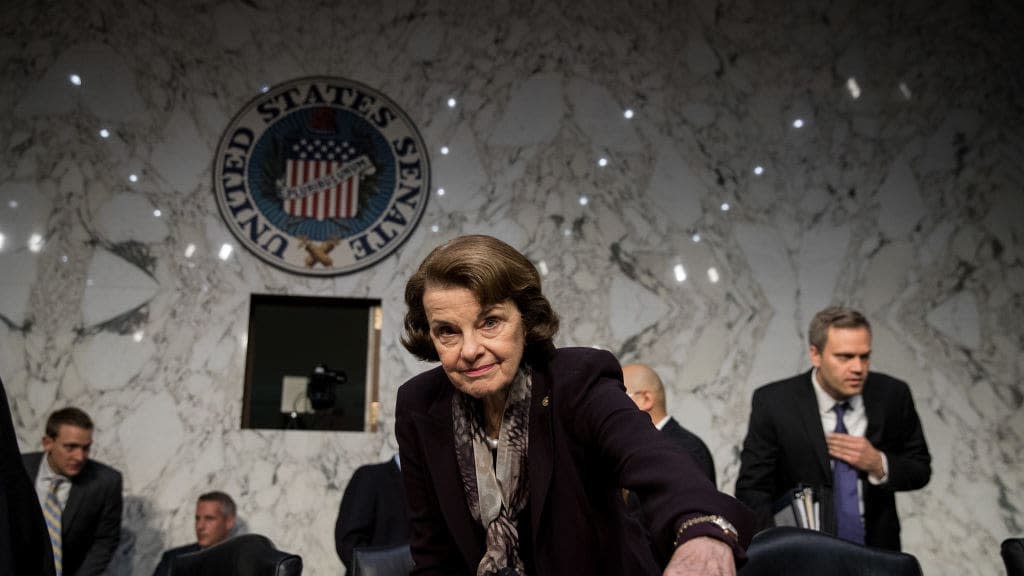
- Oops!Something went wrong.Please try again later.
The media crowned her Di-Fi, shorthand that captured the striking presence and confident leadership that Dianne Feinstein projected as an early pioneer of women winning elective office.
She was the first woman to lead the San Francisco County Board of Supervisors in the ’70s, and while the significance of that office doesn’t resonate today like it did then, it foreshadowed a groundbreaking career for Feinstein, who at 5-foot-10 could easily command a room and hold her own with all the men around her.
“I’ve had to get along in a male world,” she said decades later, after winning election in 1992 to the U.S. Senate from California. “I am of an age where when I first applied for a job, it was ‘women need not apply.’ So the way I’ve chosen to go is to show that I can be effective.”
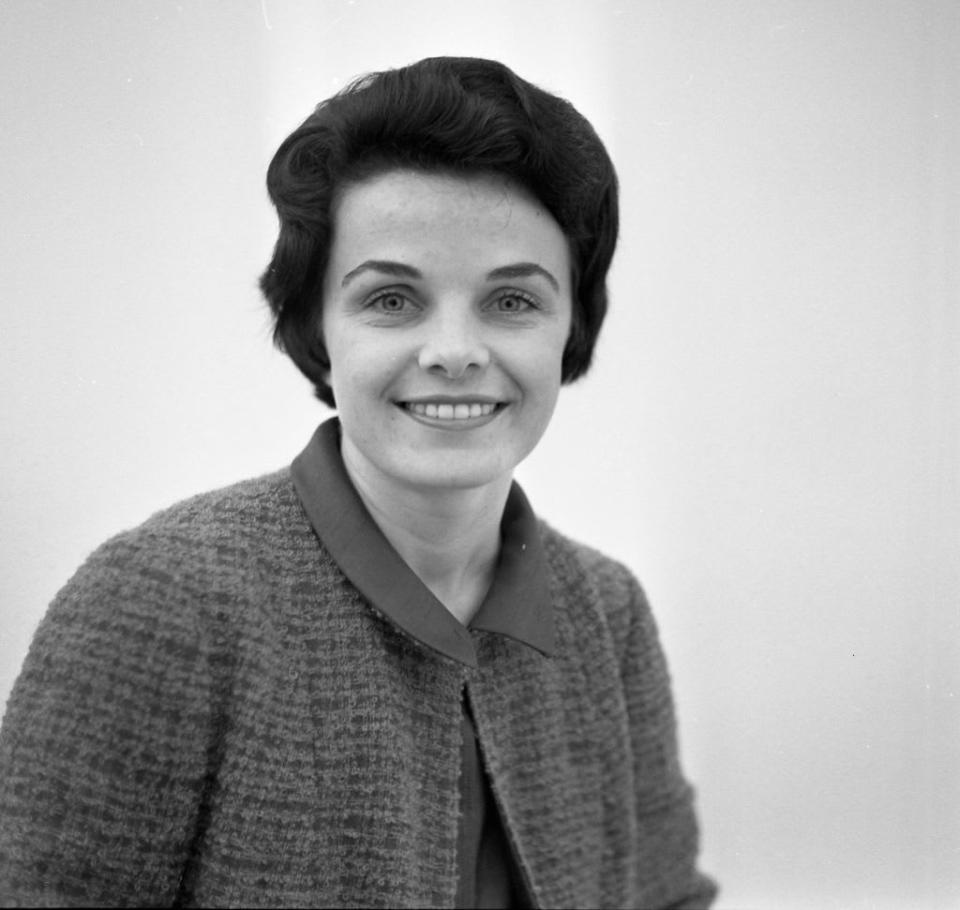
As a member of the California Women’s Board of Terms and Paroles in June 1964.
At the time of her death, Feinstein was the oldest member of the Senate. She ran for her fifth and final term when she was 85 years of age, breaking records for longevity while prompting concerns among Democrats that a long career forged with bipartisan bonhomie and steeped in centrist policies no longer fit the times. Her warm embrace of Judiciary Chairman Lindsey Graham after the contentious confirmation along partisan lines of Amy Coney Barrett to the Supreme Court a week before the November 2020 presidential election cost Feinstein her ranking spot on the committee.
She was a “new Democrat” before the term was invented, steering compromises and successfully navigating internal party pressures. She pushed measures tough on crime while also advocating gun control. From the moment she arrived in the Senate, she was known for her willingness to cross party lines. In 1994, as a freshman lawmaker, she wrote the bill that banned military-style semiautomatic assault weapons and pushed it through the Senate to passage. When it expired in 2004, gun rights advocates hardened their position, and gun safety measures languished. After the Sandy Hook Elementary School shooting where a lone gunman took 26 lives, including 20 first-graders, Feinstein tried again in 2013 to remove these lethal weapons from civilian use. On the morning of the vote, she displayed on the Senate floor a blow-up of a New York Daily News front page with photos of the deceased children and the headline, “Shame on U.S.”
Feinstein’s political career grew out of the tragedy of gun violence. In 1978, after losing her second bid three years earlier to become mayor of San Francisco, Feinstein told local media she was done, there would not be a third try. “I became convinced I had something really lacking in me, that I was not electable,” she said. Later that same day, a crazed former city supervisor and ex-cop, Dan White, entered City Hall through a basement window, avoiding metal detectors, and fatally shot Mayor George Moscone and city supervisor Harvey Milk, the city’s first openly gay elected official. Feinstein had mentored Milk and was the first to find his body, recounting how she heard shots, ran to his office and when she placed a finger on his wrist checking for a pulse, “it went through a bullet hole.”
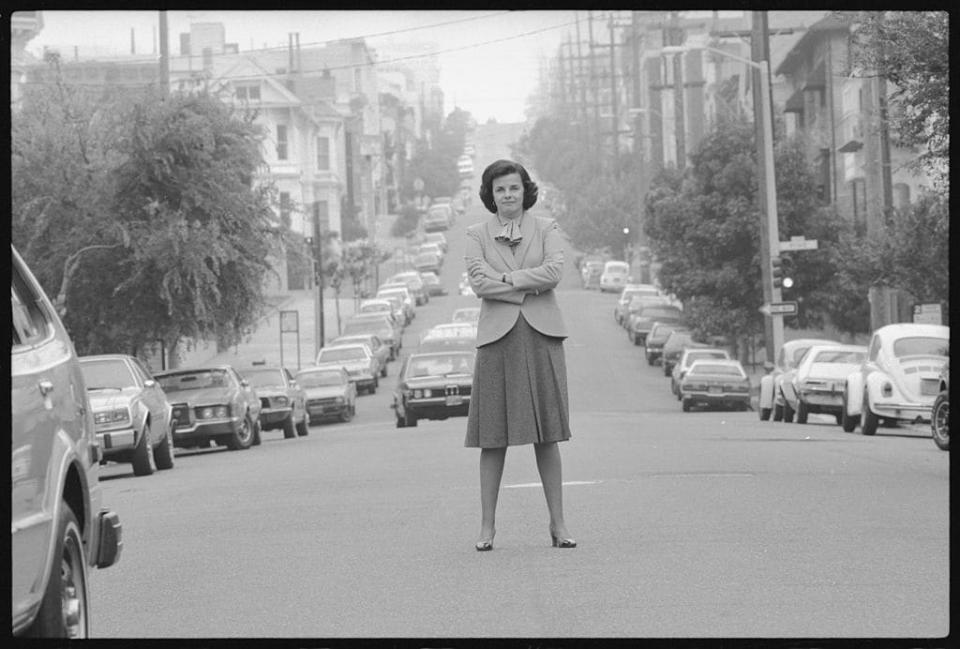
San Francisco Mayor Dianne Feinstein stands in the middle of Steiner Street looking tough to illustrate her campaign of “taking a stand” against crime in San Francisco.
As president of the Board of Supervisors, Feinstein was next in line to be mayor. Her announcement only hours earlier was relegated to a historical footnote. She served out Moscone’s term and went on to win two four-year terms.
Her steady leadership during what became known as the “White Night Riots” made her a national figure. What started as a peaceful march on May 21, 1979, the eve of what would have been Milk’s 49th birthday, through the Castro district of San Francisco turned violent when the protestors reached City Hall. Earlier that day, Dan White had been convicted of voluntary manslaughter, a minimal sentence considering the crimes he had committed. The gay community expressed its fury by vandalizing City Hall and causing hundreds of thousands of dollars in property damage while police in full riot gear retaliated several hours later by raiding a gay bar in the Castro section and beating the patrons.
It was a defining moment in San Francisco’s relationship with its increasingly visible gay community, depicted at the time as the most violent uprising by gay Americans since the 1969 Stonewall riots in New York City.
Feinstein stood with gay leaders when they refused to apologize and in November of that year with the support of the gay community won her first full four-year term as mayor. She promptly fulfilled a campaign pledge to name a pro-gay chief of police, which eased tensions and proved to be a springboard for her evolving career.
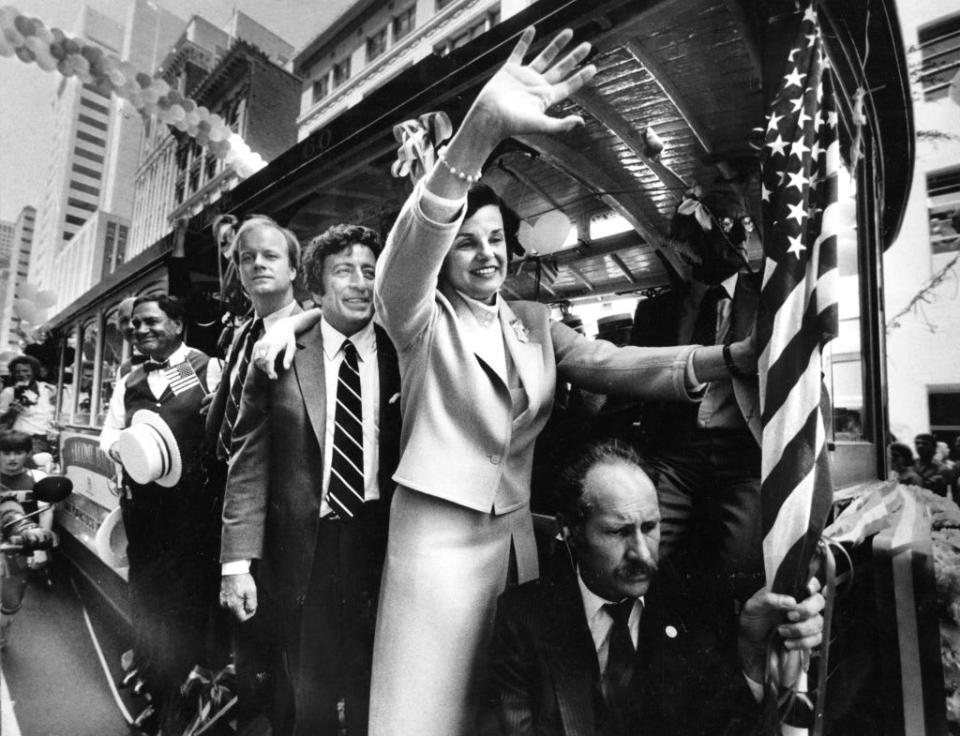
A San Francisco mayor, on a cable car with Tony Bennett, June 22, 1984.
She never flinched from taking positions that could make her the target of violence. She had the windows of her home shot out while her second husband lay inside terminally ill. A bomb was found in a window box outside her daughter’s bedroom. And once while she was walking precincts as mayor, a man pointed a pistol at her head and pulled the trigger. Fortunately, it was a cigarette lighter. The Los Angeles Times reported that for a time in the ’70s. Feinstein carried a .38-caliber pistol in her purse.
Feinstein was born Dianne Emiel Goldman on June 22, 1933, to Dr. Leon Goldman, a prominent surgeon who was the first Jewish chair of surgery at the University of California San Francisco’s medical school, and Betty Rosenburg, a Russian émigré whose family had fled Saint Petersburg during the 1917 revolution. Her Russian-American mother, who worked as a model and was known for her beauty, suffered from erratic behavior that was later attributed to an organic brain disorder. “The deterioration started when she was still a relatively young woman, and it had a profound impact on all of us. From the outside, it appeared that I had a very easy childhood. From the inside, it wasn’t easy at all,” Feinstein said.
On the recommendation of an elementary school teacher, young Dianne attended the Convent of the Sacred Heart Catholic school in San Francisco. She credits the doctrinal classes with helping her answer the “big questions” and she learned self-discipline. Paying careful attention to how she presented herself was Feinstein’s hallmark from an early age. After school, she would often stay in the car to do her homework to avoid dealing with her mother’s moods. She was one of the first non-Catholics at Sacred Heart, and by her senior year in 1951, she was class president. A classmate, writer Patricia Bosworth, remembered Dianne Goldman as “a slender, immaculate brunette” who captured the pink ribbon for “good conduct” given out at assembly.
She went on to Stanford University, where she was elected vice president of the student body in her senior year. “She was always political,” says classmate Carla Hills, who rose through the ranks on the Republican side, becoming the first woman to serve as Secretary of Housing and Urban Development.
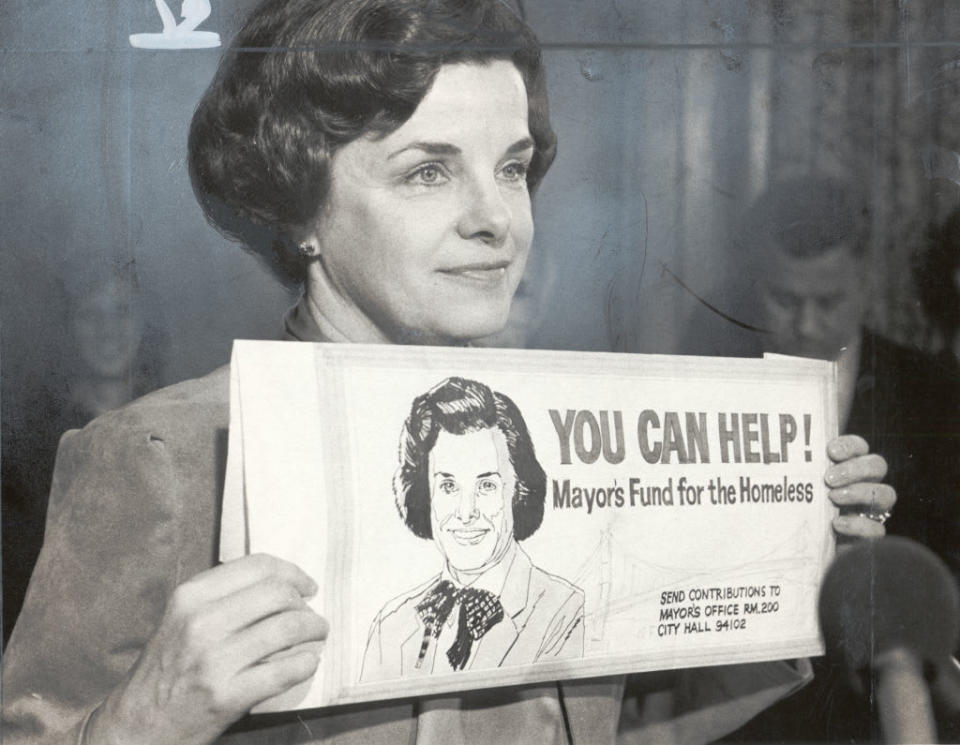
Holding a copy of a billboard to be placed in 20 locations throughout San Francisco on Jan. 20, 1983.
Big things were always expected of Feinstein. She was mayor of San Francisco when she was first touted as a potential vice-presidential candidate. It was 1984, and Democrat Walter Mondale was looking to make history and choose a woman as his running mate. Feinstein found it preposterous. “I’m on my third marriage,” she exclaimed. “This job is hell on my private life. My husband, Dick Blum, is a most patient man. President? Me? I’m not ambitious for higher office. I’ve got to survive as mayor.”
Feinstein was vetted for the job, but Mondale chose New York Rep. Geraldine Ferraro, who wrote in her memoir that if God had shown her a videotape of what the next months would be like, she would have said, ‘Thanks, God, but could you do me a favor and choose Dianne?”
Fifteen years after Mondale lost in a landslide to President Reagan, I was working on a book project about “Madame President,” and I met with Senator Feinstein in her Capitol Hill office. She was in her first term, having been elected in 1992, dubbed the “Year of the Woman,” when a record number of women (4) were elected to the Senate. I asked if she still agreed with the sentiment she had expressed as mayor, that she was not seeking higher office. “Yes, absolutely,” she said. “You know, people have always attributed some sort of ambition to me that I really don’t possess. I have finished every job I’ve started—always.”
A brief early marriage to Jack Berman, then an assistant district attorney in San Francisco, resulted in Feinstein’s only child, daughter Katherine Feinstein Mariano, born in 1957, who is currently the presiding judge of the San Francisco Superior Court.
Feinstein’s second husband, neurosurgeon Bertram Feinstein, who was 19 years her senior, died in 1978 after a three-year battle with colon cancer. “He was the sun, the moon, and the stars,” she said.
In 1980, she married Richard Blum, the head of an equity investment firm that he founded, and whose overseas holdings and extensive business dealings in China were periodically scrutinized for potential conflicts of interest with Feinstein’s positions, particularly on trade. More recently, in 2020, Blum’s role as a regent in the California university system revealed he had sent an “inappropriate letter of support” that gained admission to UC Berkeley for a student with only a 26 percent chance of making the wait list. Blum told the San Francisco Chronicle that he had done nothing wrong and that he had used his clout to get friends and family into the elite public system for years.
After the November 2020 election, Feinstein announced that she would not seek the chairmanship or ranking position on the Judiciary Committee, bowing to concerns spelled out in devastating detail in a New Yorker article about her memory lapses.
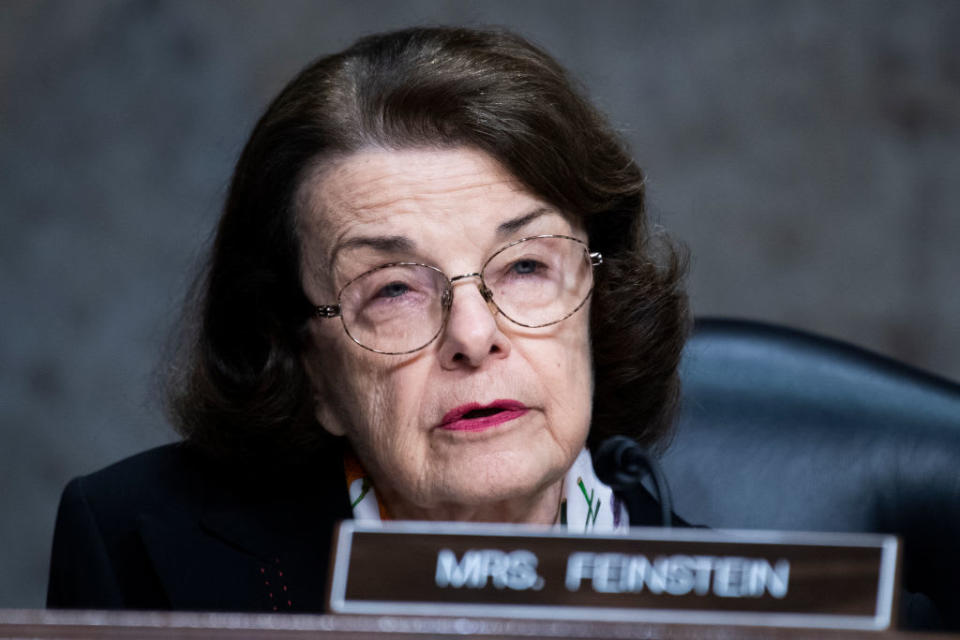
Attending a Senate Judiciary Committee confirmation hearing in Dirksen Senate Office Building on April 28, 2021, in Washington, D.C.
“She had a tremendous career of public service and commitment to gun safety and abortion rights. And her fight against torture during the Bush years was extraordinary and inspiring,” says Daniel Goldberg with the liberal advocacy group Alliance for Justice. He added, “I wonder why in Washington people don’t want to retire.”
Maybe the answer can be found in Feinstein’s fight in 2014 to release parts of the Senate Intelligence Committee’s report on the CIA’s torture program which she had helped expose and investigate, and which she called in a speech on the Senate floor a “stain on our values and on our history.” She had served on the Select Committee on Intelligence since before 9/11 and her long term of service extended through the debates on the “enhanced interrogation” of terrorists that defined the post-9/11 wars in Afghanistan and Iraq. This is just one piece of the arc of history that she helped bend toward justice over a career that spanned more than five decades.
Get the Daily Beast's biggest scoops and scandals delivered right to your inbox. Sign up now.
Stay informed and gain unlimited access to the Daily Beast's unmatched reporting. Subscribe now.

